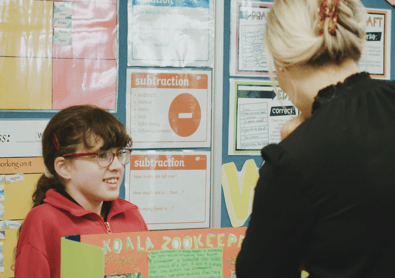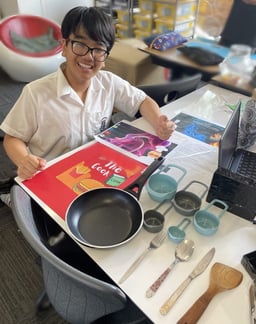The many faces of student futures
When we were planning upcoming Reimagining Careers Education sessions, we asked our community what they liked from the last two years of live, online...

Traditionally in Career Development, it's all about efficiency -- especially in a school environment with so many competing priorities and limited resources. How do we remove the uncertainty and ensure all students have a plan for the next step, we ask.
If education is the process and students are the product, then career development is often the piece towards the end when we try to wrap it up neatly and ship it out hoping it will arrive in one piece.
Watch out for the common shortcuts when it comes to doing effective careers education
If a system doesn't provide the time, tools or resources to build real student agency over their future lives and careers, then we're clearly signalling to young people that agency is not important.
A system-driven process towards the end of high school, just in time for a decision, encourages students to take shortcuts to 'a plan' without questioning too deeply whether it's their own plan or someone else's plan for them, and without teaching them what to do if/when a plan doesn't work out.
We only have to look at the anxiety levels of school leavers, the tertiary drop-out rates and the under- and unemployment rates of young adults to see that this scramble for answers is failing them.
Careers Education programs should not be judged on whether every student has a plan for the next step at the exact moment in time we need them to. Not when we know that, below the surface of that neat reporting, our students may have got to that plan based on shallow thinking and by using decision heuristics.
Effective, student-centred careers education prepares students with the skills to thrive in their future, such as agency over their own decision, the capacity to navigate uncertainty, and the skill to perceive and engage with opportunities.
It is these skills that we should measure to evaluate our careers education programs and prevent the shortcuts.
As school and system strategic plans tick over, we're increasingly seeing student futures or careers education prioritised. This makes total sense. Done well, careers education is not only preparing young people with the skills to navigate their career, it's also a superpower helping to address some of the biggest challenges in education:
I have no idea whether this quote should be attributed to someone other than my mum, but growing up this was one I heard (a lot!) when I was about to take a shortcut instead of a harder route that would lead to better outcomes.
This saying rings very true now in our work with schools and systems (and yes I've given myself a teenage eye-roll or a bombastic side-eye, just for writing it!)
With an increasing understanding that careers education is worth doing, we must be really conscious of what doing it well looks like. Because that's what makes it powerful.
We also need to recognise the common shortcuts to be wary of. The recent UK Parliamentary Inquiry into CEIAG (Career Education, Information, Advice and Guidance) provision in schools concluded that many initiatives and activities happening in schools were 'box-ticking' rather than having true impact on student outcomes.
We want to help schools to avoid the usual shortcuts and make sure that each school and system we work with benefits from the powerful outcomes we know are possible.
The BECOME program has been recognised by the OECD Career Readiness team as an example of Global Effective Practice based on the measured impact it has on students' career awareness, their aspirations, and the authentic agency they operate over their future. These outcomes can't be achieved by a quick test/quiz or a 10-minute chat with a teacher who hasn't been trained in student-centred career conversations.
The truth is that doing careers education well requires almost the opposite approach to the one we're used to and structurally set up for.
Efficient movement to a clear outcome (a decision) is not best practice. We have to take it slow and let young people explore broadly and think deeply about themselves, about work, the world and the influences on their view of the world. It's harder but worth it: we've spent years helping schools and systems to upskill, innovate and embed this important work properly.
We need to give young people the time, space and tools to explore broadly and think deeply about their future. To slow things down and give them the opportunity to test their ideas out in low stakes situations long before a high stakes decision is due.
 BECOME starts in upper primary with curiosity driven, fun exploration of jobs with no expectation that this is in any way a life decision.
BECOME starts in upper primary with curiosity driven, fun exploration of jobs with no expectation that this is in any way a life decision.
Starting early gives students practice at weighing up options and seeing opportunities as they learn about their personal drivers and aptitudes.
The evidence is conclusive and experts in the field are all fairly well-aligned that a whole school approach to careers education is where we need to head.
In practice, providing the time, space and tools within our current system is hard to do well - but so worth it!
So what does doing it well look like, and what are the shortcuts to watch out for when planning a program?
1. Time
Young people need the chance for repeated engagement with their ideas for their future as they and the world around them change. We should be starting this work in the primary years as we know this is the best time to help them expose and chip away at the bias and influences which are shaping their aspirations and to open their eyes and minds to their future. At BECOME we start with Year 5. Someone recently challenged this approach on the basis that 'there's no rush' - and to that we say that is exactly the point - there's no rush, so we can encourage young people to be curious, open and inspired by their future possibilities without pressure to make a decision. The key shortcut to avoid here is focusing only on senior secondary because that's where careers has traditionally lived.
2. Space
 By this we mean the educational space. Until careers education has its own space on the curriculum we have to be creative about this. We need evidence-based resources that deliver quality career learning outcomes and that are curriculum-aligned in order to open up the educational space for this work.
By this we mean the educational space. Until careers education has its own space on the curriculum we have to be creative about this. We need evidence-based resources that deliver quality career learning outcomes and that are curriculum-aligned in order to open up the educational space for this work.
BECOME includes flexible lessons and resources, and we work with each school to adapt the master scope and sequence to fit as seamlessly as possible with current programs whether it's in English, Humanities, PDH or pastoral care / form time.
The shortcut to avoid is squeezing careers in to the odd moment here and there rather than finding focused time for it. It's a great ambition to ask every subject teacher to connect their learning areas to careers but this should be in addition to time for explicit student-centred careers education.
3. Tools
The tools and resources we choose should develop a young person's true agency over their future. Many career education programs and tools promise to make careers education easy but actually reduce a persons' self-efficacy or even worse, facilitate and encourage decision shortcuts such as using a test or quiz to get to an answer about the work you're suited to.
n.b. If you are going to use a test of some kind in your program (which I've spoken about extensively here) it's critical to make sure that it's evidence-based and robust. Quality tests and assessments are not created overnight, so be sure to check the reliability and validity scores before you use them with young people. If it is quality and you really want to include it then make sure it's an additional source of insight not the main event in the career program or the singular thing young people are relying on to make a decision.
Tools and programs that actually build self-efficacy and deliver student outcomes are worth the extra effort. We've heard students say that our program made their brain hurt or that they were surprised that they had to work hard in this unit, and we love that! The student does the work supported by a teacher who has had quality PD so they can confidently support the process and have evidence-informed conversations.
To give you a flavour of the BECOME approach and how we build authentic student agency:
From years 5-10 we build students' awareness, aspiration and agency, challenging them to expand and extend their own skills and resources. By year 10 this is measured by the 'Be Your Own Career Advisor' unit in which students take the lead in their subject selection / pathways conversation demonstrating their critical thinking, research and communication skills as they take the lead by researching and articulating their plans and planning skills.
We aim to make it as easy as possible for schools to implement this contemporary, whole school approach to careers education, but the reality is that it's harder than just continuing to do what we've always done.
There are no shortcuts to building these lifelong skills. We need to slow the process down and let deeper learning happen. Even if there were shortcuts we wouldn't take them. The benefits and positive outcomes of this work along the way are transformative as students start to feel in control of a future designed by them, not defined for them.
Read more:

When we were planning upcoming Reimagining Careers Education sessions, we asked our community what they liked from the last two years of live, online...

First published in the Sydney Morning Herald, August, 2024. School careers advisors are like a “backwards Google” and the tools they use are...

Has your career been a simple path from A - to B - to C? Would 16-year-old you be surprised at what you do now? What would they have said if someone...